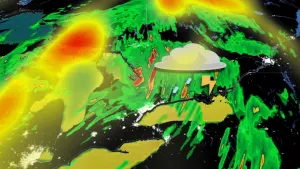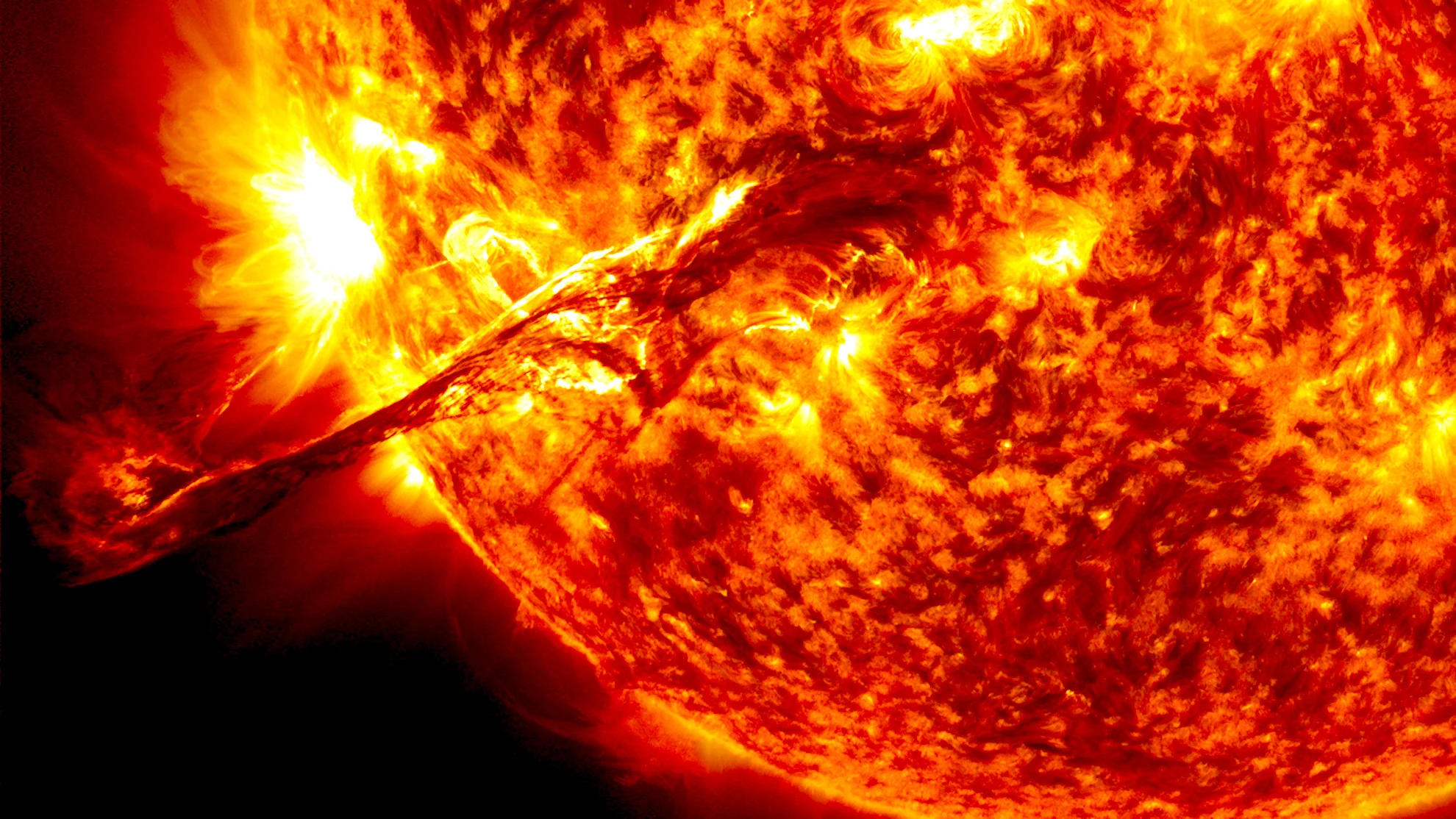
Amazing (sometimes scary) views of our Sun from the past 10 years
NASA's Solar Dynamics Observatory has been watching the Sun for a decade
On February 11, 2010, NASA launched the Solar Dynamics Observatory into space on a mission to keep a close watch over the Sun and solar activity. Now, after ten years, here are the best views it has given us of our parent star.
Just two years after it was launched, SDO captured what can only be described as 'solar tornadoes'.
According to NASA, although these tornadoes resemble the ones we see here on Earth, they are not created by wind, but instead by solar plasma spinning around magnetic fields. Also, they stretch up to 13,000 kilometres above the surface and can rotate at speeds of nearly 300,000 kilometres per hour.
One of the most impressive sights revealed by SDO shows what are known as coronal loops.

Solar plasma rains down onto the surface of the Sun from these intensely heated coronal loops. An image of Earth is provided for scale. Credit: NASA/Goddard Space Flight Center
Seen here in images captured in July of 2012, arcs of superheated solar material stretch upwards from the surface, looped around powerful magnetic field lines. The image of Earth, provided for scale, reveals the truly immense proportions of these loops. From the brightest arc, plasma rains down from over 63,000 kilometres above the surface - five times the width of Earth - while the entire structure stretches to a height of more than 114,000 km (roughly the size of Saturn, without its rings).
Only two and a half years into its mission, SDO captured one of the most iconic images of solar activity that we have ever seen.
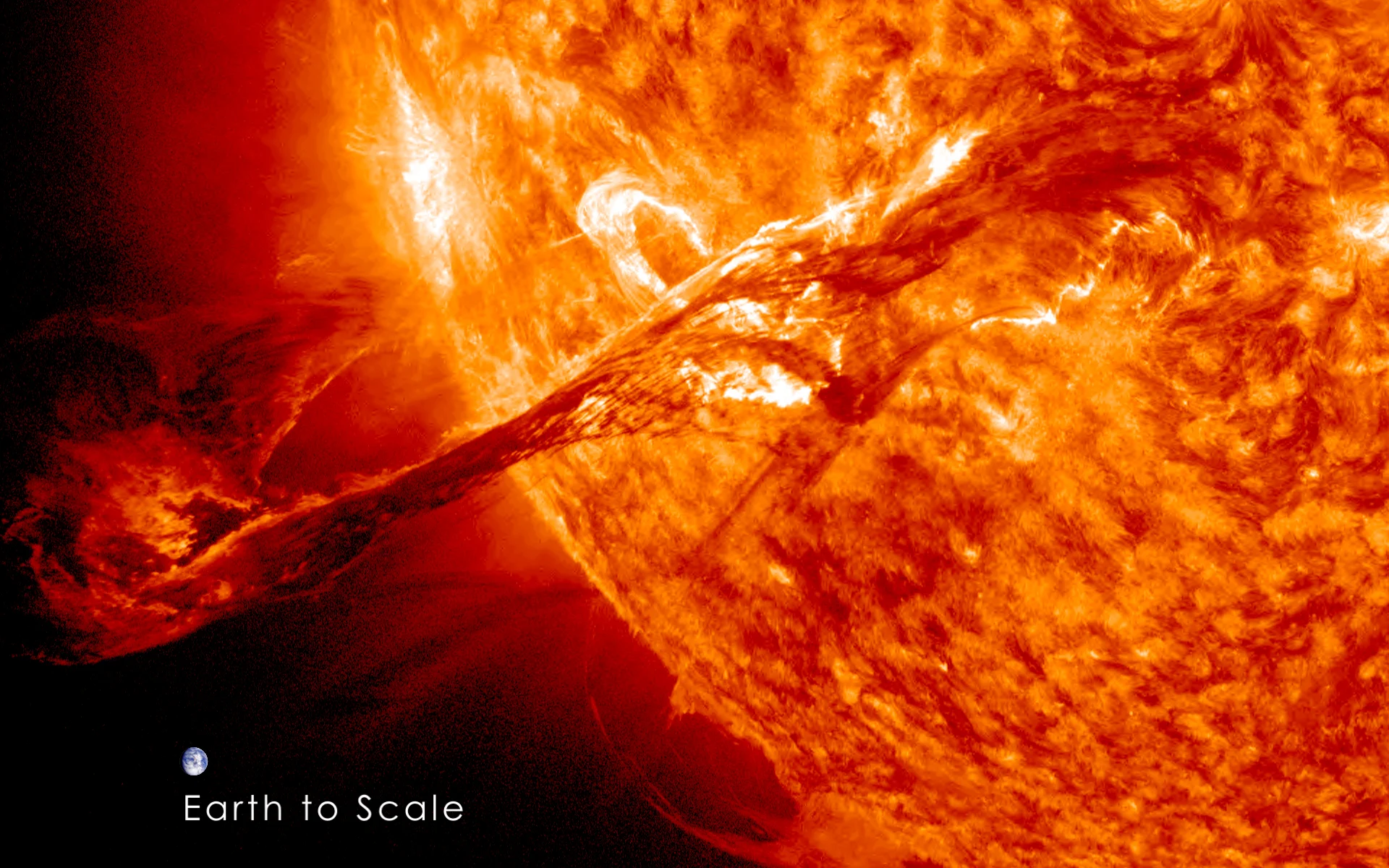
This immense coronal mass ejection erupted into space on August 31, 2012. Although it was not an Earth-directed CME, it dwarfed our tiny planet by comparison. Credit: NASA/Goddard Space Flight Center
On August 31, 2012, an immense filament of solar plasma, heated to tens of thousands of degrees, arched high above an active region on the Sun's surface. As it was held there by powerful magnetic fields, SDO captured a sequence of images, documenting this impressive display of our home star's power. When the filament finally stretched outwards and snapped, it propelled a cloud of hot plasma, weighing in at billions of tonnes, out into the solar system. This solar storm would eventually expand until three days later, one edge of it swept past Earth. Due to the energy, density and speed of the storm, it resulted in a vivid display of the Northern Lights.
Having now gone through nearly an entire solar cycle, from 2010 to 2019, SDO watched as solar activity ramped down from the twin peaks of 2011 and 2014. Even two years before the end of the cycle, though, when activity was nearing its minimum, the mission showed us that the Sun was still capable of intense activity.
A lone sunspot complex, labelled Active Region 2665, began crossing the Earth-facing side of the Sun in early July 2017. Towards the end of its journey across the face of the Sun, on July 14, 2017, it generated some intense coronal loops that bridged across the entire sunspot.

Sunspot AR2665 as viewed through SDO's 171 Angstrom filter, revealing the elegant coronal loop structures around the region. Credit: NASA
Weeks later, in early September 2017, another small sunspot named AR 2673 suddenly blossomed to ten times its original size. Developing into a chaotic sunspot complex surrounded by a cluster of tangled magnetic loops, it contained an immense amount of energy, just waiting to erupt. On September 6, the tangles abruptly snapped, producing the most powerful solar flare of the entire 11-year cycle!
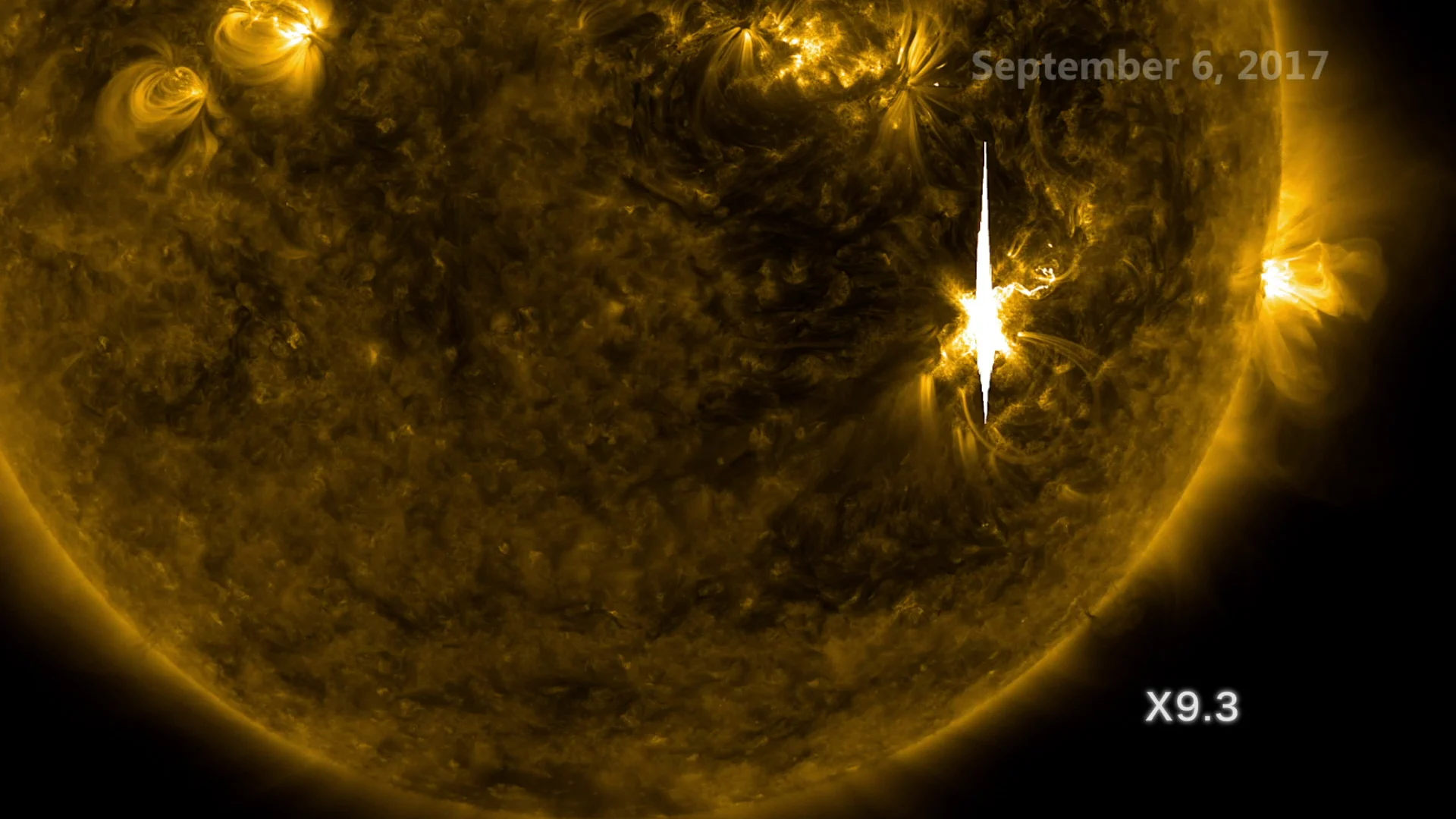
This X9.3 flare blasted out from the Sun on September 6, 2017. It was the most potent solar flare seen from the Sun since 2005. Credit: NASA
Scientists studying the Sun have known for some time that our local star can still produce extreme activity even very late in a solar cycle. This proved to be an excellent example.
Overall, SpaceWeather.com ranked this flare as the 14th strongest ever seen since the mid-1970s. It was quite tame, though, compared to the Halloween storms of 2003 and the Carrington Event of 1859 (two of the strongest geomagnetic events ever recorded).
WHY DOES THIS MATTER?
Our Sun is an active star, which is continuously emitting a stream of charged particles into space we call the solar wind. At the same time, it is capable of blasting out powerful solar flares that bathe space in x-rays, and it can throw off immense coronal mass ejections (aka 'solar storms') that expand out into the solar system.
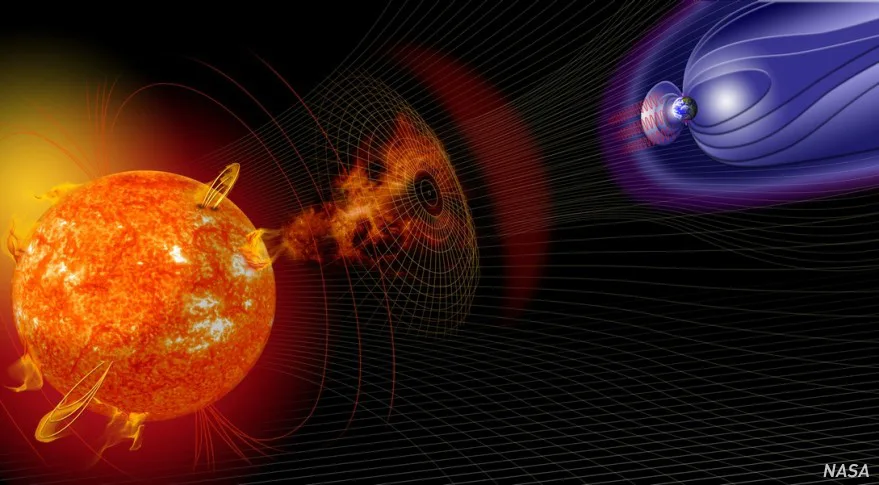
This graphic collects the various impacts of space weather. Credit: NASA
Scientists group all of this activity under the heading 'space weather', due to the effect it can have on Earth and our technologies - both in space and on the ground. The more dependent our society becomes on technology, the more important it is for us to know about effects that will disrupt those technologies.
X-rays from solar flares cause radio blackouts on the daylight side of the planet, with the stronger the flare, the more intense and long-lasting the outage. They can also have damaging effects on spacecraft that are not shielded against these discharges.
Changes in the flow of the solar wind, and the arrival of solar storms, can spark disturbances in Earth's magnetic field, known as geomagnetic storms. These often result in spectacular displays of the auroras - the Northern and Southern Lights, but there can be negative impacts as well. The fluctuations in Earth's magnetic field during particularly strong geomagnetic storms can cause electrical problems with spacecraft in low-Earth orbit, and they can produce electric currents through the ground that are capable of disrupting electrical power grids, causing blackouts.
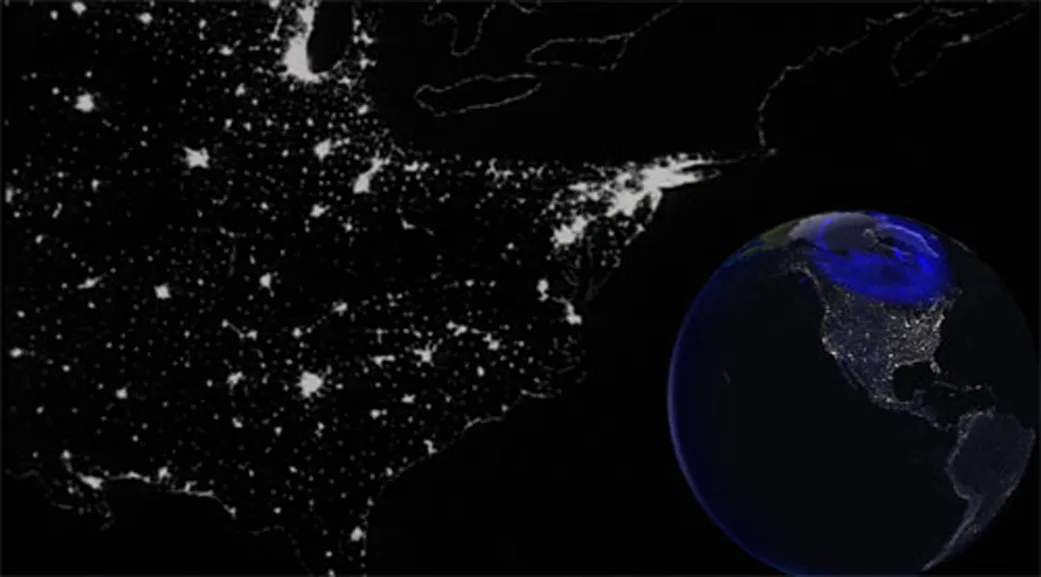
This artist's drawing depicts the 1989 Quebec blackout, which was caused by an intense geomagnetic storm after a solar storm passed by Earth. Credit: NASA
SDO helps protect us against these space weather impacts by snapping images of the Sun in different wavelengths every 12 seconds.
While we have no way of directly shielding ourselves against the impacts of a solar flare or the geomagnetic effects of a solar storm, having 'eyes' on the Sun provides us with vital warnings. Forewarned about a potentially dangerous situation developing, we could take action, shutting down satellites and vulnerable power grids until the danger had passed.
Sources: NASA | NOAA | Spaceweather.com









